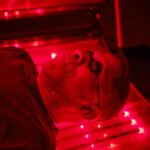The topic of aging has become more prevalent in doctor’s offices, families, and daily conversations with friends. With today’s advancements in biotechnology, why shouldn’t aging be easier than in decades past?
In particular, significant advancements have been made in addressing joint health and neurological conditions associated with aging. Cutting-edge stem cell therapies offer effective solutions to alleviate the adverse effects of these conditions, providing vital support throughout the aging journey. Let’s discuss how aging gracefully can be your reality with stem cell therapy.
What Is Stem Cell Therapy?
First, it’s best to understand the science behind stem cell therapy. We can then dig further into the benefits and applications of its aging solutions. Stem cell therapy involves leveraging stem cells to bolster other cells in the body that may be aging, weak, or not functioning optimally. Stem cells are initially unspecified, meaning they haven’t received the “go” signal to become a specific cell type.
The Cost of Aging
Life expectancies have been on the upswing for decades, and today we are living longer than ever before. With a longer life, the cells that make up our bones, tissues, joints, and brain, experience prolonged wear and tear. We also lose stem cells at an exponential rate and they become weak and tired. This leads to aging-induced inflammation throughout the body. With longer lifespans taking their toll on optimal health, our immune system, cognitive function, and overall quality of life decline, as well. Aging is a hot topic, with Statista reporting the global anti-aging market is expected to reach a value of 93 billion by 2027.
Where Do the Stem Cells Come From?
Stem cell therapy has been a controversial topic because of the sourcing of certain stem cells, which involves using embryonic tissue from terminated pregnancies. Dr. Scott™️ and the Castle Rock Regenerative Health team only use umbilical-derived stem cells, not bone marrow or embryonic-derived, offering the non-controversial benefits of stem cell therapies. A 2013 study confirmed that umbilical-derived stem cells are the most potent and longest-lasting stem cells.
Umbilical-derived stem cells are obtained through ethical means, allowing the incredible potential of these cells to be harnessed and shared across different age groups without causing harm to the donor. These cells are located and harvested from the umbilical cord after a live birth.
How Does It Work?
Castle Rock Regenerative Health’s ethically sourced stem cells are processed at the FDA-approved Cord for Life lab and then shipped to us for our patients’ various treatments. This revolutionary medical biotechnology is making waves in the medical research community and is demonstrating infinite therapeutic potential.
Umbilical-derived stem cells help fuel our system with stem cells that we are no longer efficient at making and proliferating. These stem cells send a signal (proteins and peptides) to the damaged tissue to repair itself. They fill in the aging “gaps” that lead to chronic inflammation, neurological conditions, joint degradation, bone density loss, and vascular incidents like stroke. With these therapies, patients experience incredible results and symptom improvement.
Our Own Stem Cell Pioneer
Dr. Scott™️ leads the way in stem cell therapy and regularly treats patients with this innovative approach. He has immense success in treating many conditions and continues to tailor each therapy sequence to the patient and their needs.
Aging is a journey that each of us eventually faces. With umbilical-derived stem cell therapy, it doesn’t have to be the bumpy road you expect. Learn more about how you can take advantage of ethical stem cell therapy to improve your quality of life in the golden years! If you or a loved one wants to age as gracefully and comfortably as possible, book a free consultation with Dr. Scott™️ today to explore your options.
*The FDA has not approved umbilical cord stem cells for regenerative medicine.
Sources:
Application of mesenchymal stem cell therapy for aging frailty: from mechanisms to therapeutics
Stem cell therapy for neurological disorders: A focus on aging
Inflammation and aging: signaling pathways and intervention therapies
Bioassay for monitoring the anti-aging effect of cord blood treatment
Umbilical cord stem cells: Background, processing and applications




